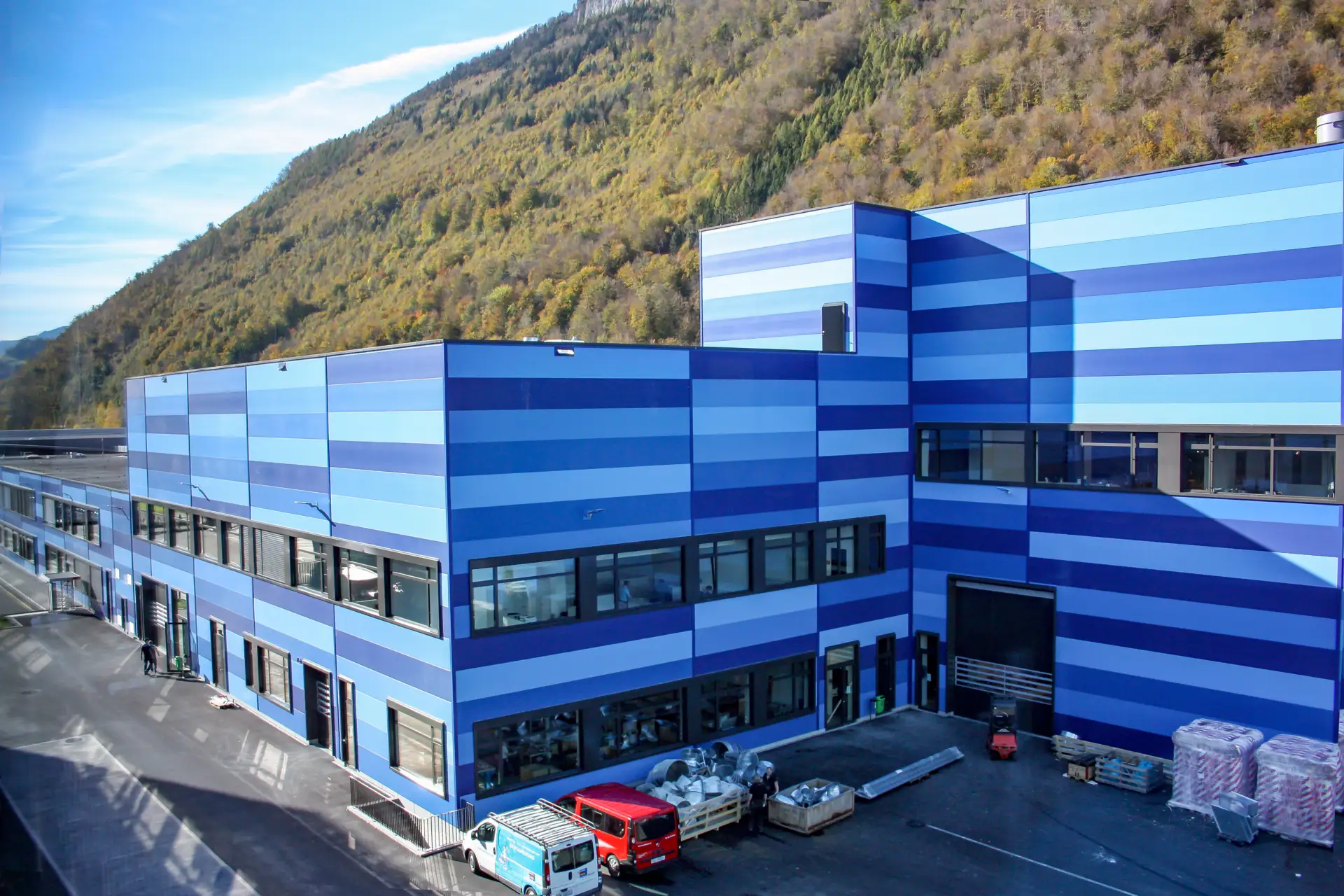From the start of excavations to moving-in day, our new surface treatment and paintwork building was ready in less than two years, bringing part of the ambitious “production 2015” project to a close.
With its blue facade embedded between the other buildings on our site, the new hall is a real eye-catcher! Entering the L-shaped building, one becomes more aware of its impressive dimensions. Large, light rooms offer space for the full range of component surface treatments – from individual parts to entire modules such as wings and fuselage for all aircraft types.
The biggest challenges
Having defined the paint systems and suppliers, the architect was able to make a start on planning, which was itself based on a detailed process of evaluation. The key issue was how to install complex equipment inside a new building. Ventilation systems were required on all three floors, for example. The planners, structural engineers and various teams of builders really had to think hard and carefully in order to deliver the most space-saving, cost-effective solution. Logistics was another crucial issue: over 160 loaded lorries arrived on the site between February and September 2017. Meanwhile, aircraft production operations had to continue uninterrupted.
The building houses eight new combi-paint booths, three paint systems with drying oven, one modular paint booth, modern office accommodation, spacious cloakrooms, showers and a large area in which to relax. Over 100 employees now have a new workplace. The hall went into operation in mid-August 2017 and all equipment and systems have been in use since end of November.
Current activities
The new production area brings many advantages: process-related workplaces, simplification of material flows and reduction of turnaround times. This in turn means more efficient production and greater scope for dealing with bottlenecks. In terms of quality, the individual processes are designed around the latest technical standards. In the new continuous curing oven, for example, parts may be painted by a robot, or by hand, as previously. When complete, a conveyor system automatically transports the components to the various drying areas.
Equipped with programmable air flow and humidification, the new paint facility allows staff to work simultaneously on up to three PC-24 fuselages or wings. This innovation not only delivers energy savings, it also improves drying of the painted components. The paintwork can go ahead with high process reliability, and the drying process is faster and more economical. In the past, we have had situations where, due to the high humidity, work was halted whilst the paint as required. This problem and other difficulties are now a thing of the past for the employees who work in our new Surface Treatment Centre.

